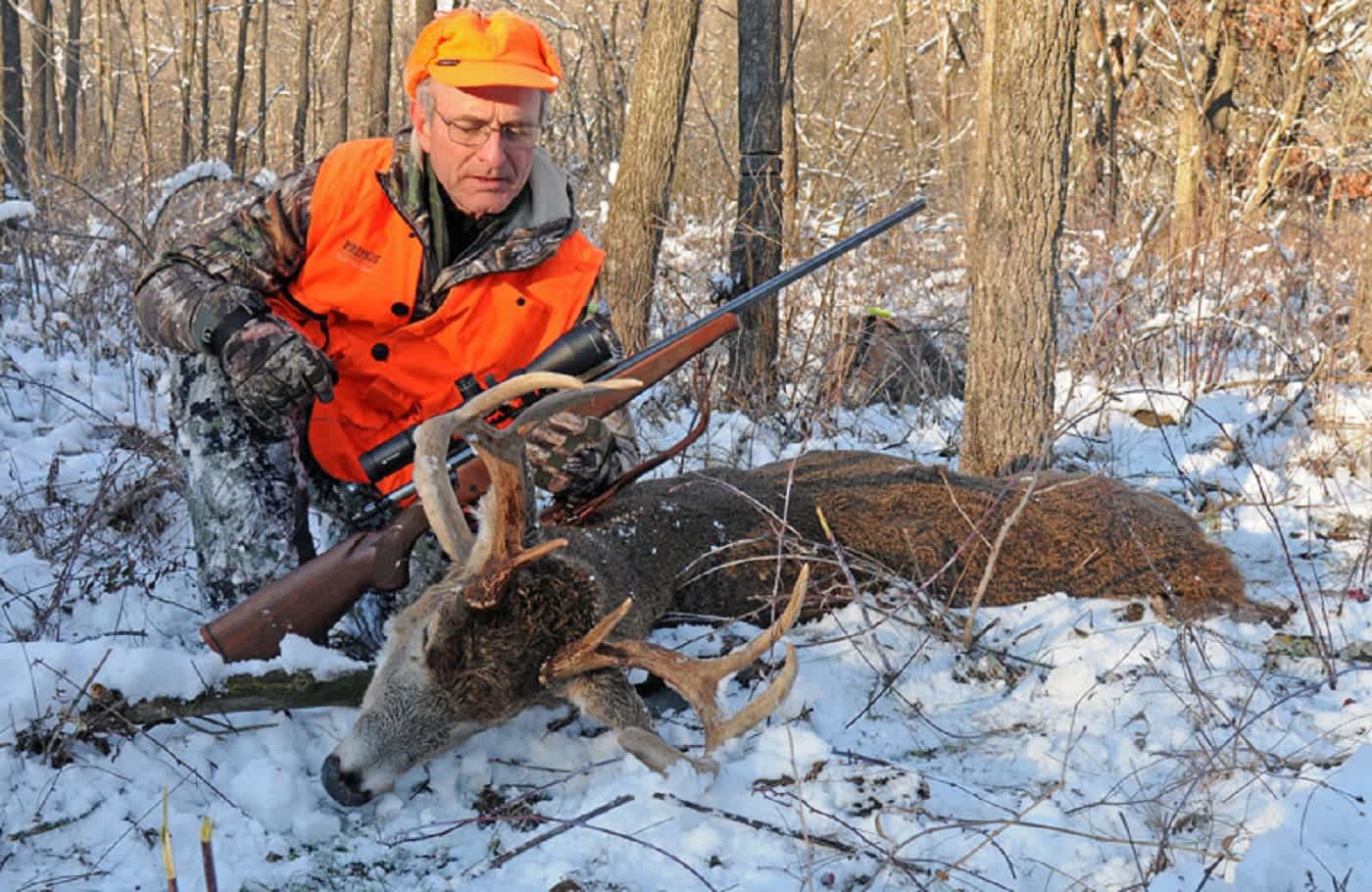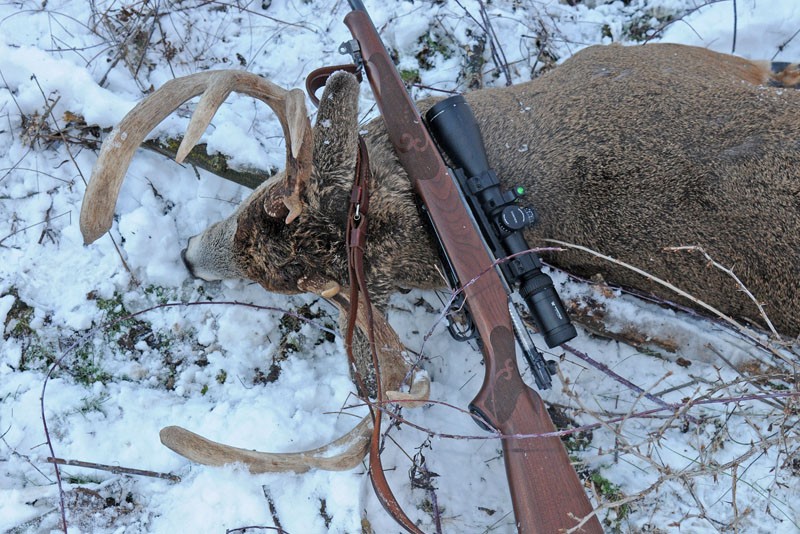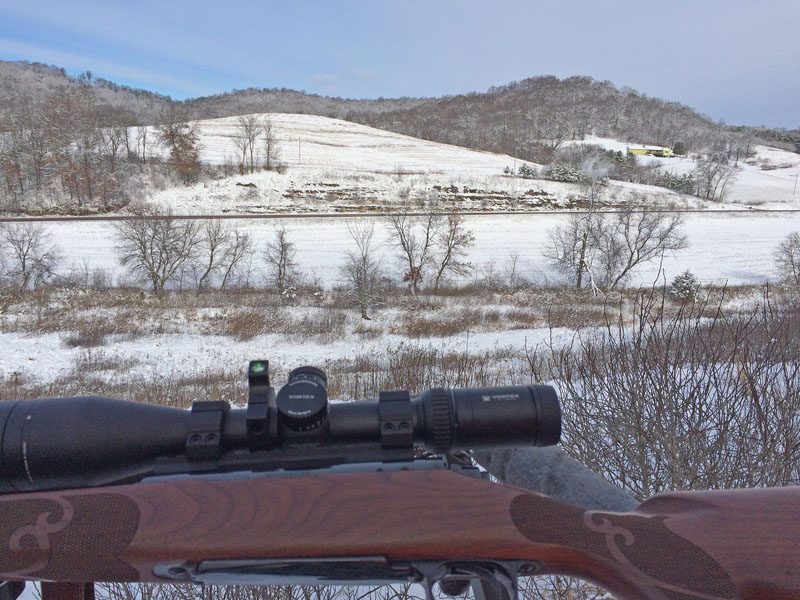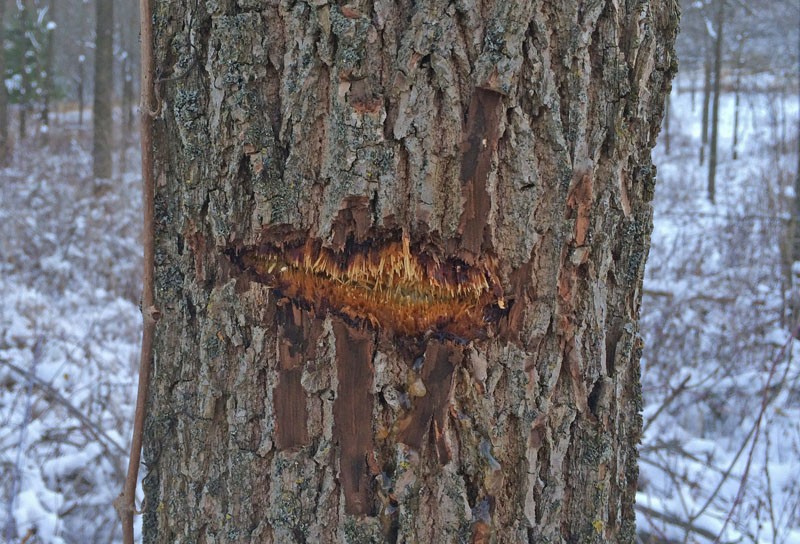Reliable Hunting Rifle Returns to Action after 30-year Break
Patrick Durkin 12.22.15

The buck vanished when I pulled the trigger about 12:45 p.m. on November 21, the opening day of Wisconsin’s gun deer season.
I assumed the buck was down for good, but I jacked another round into my .243 bolt-action rifle and stayed alert behind the scope, scanning the snow-covered woods and fields below. When nothing moved after 10 minutes, I unloaded the rifle, lowered it to the ground and descended from the weathered tripod stand.
Minutes later I carefully approached the site where I expected to find the buck. Peering into the woods, I located the red oak I had landmarked before descending the tripod stand.
Yep. There it was. The buck lay still 20 yards beyond the oak’s base. I relaxed with joy and relief. The buck was mine. The sight confirmed what I thought when first putting my riflescope on the big deer nearly a half-hour before. It was the biggest buck I’d shot since first hunting my Uncle Terry and Aunt Mona’s farm 32 years before, soon after they retired home to Wisconsin and their families’ roots.

Cupping the buck’s lower jaw, I lifted its head to examine its eight-point antlers, whose main beams were unlike any now gracing our home’s walls. After sweeping past the third set of tines, the beams flattened out like a matched set of narrow spatulas.
The right beam also sported an inch-deep hole in its bottom about halfway up its length. I assumed it had collided with a stick or branch sometime in midsummer while the antler was still growing. The wound healed but left a clean hole that could hold a cigarette butt.
The antler inspection complete, I studied the buck’s right side—the one that had faced me—to verify my shots had been true. The first shot was easy to find. It entered just behind the last rib and angled forward and downward through liver and lungs.
The second shot—the finishing blow—took longer to find. It was just forward of the shoulder blade and broke its thick neck; but not quite where I had aimed. Only later, when returning to retrieve my gear after dragging out the buck with help from my cousin, Peggy Durkin, could I explain that second shot. As I approached my pack and rifle, I noticed a fresh, downward-angling gash five feet up the trunk of a black walnut tree.
The second shot had grazed the tree, deflecting to the right. Things became clearer yet while skinning and deboning the buck after dinner. I found a third small hole halfway up the neck, and the bullet’s lead/copper core wedged tightly between two vertebrae. The second bullet had split apart while blasting through the walnut’s bark, with one fragment hitting the lower neck and one the upper neck.

Either way, the .243 had done its job. That got me thinking about the rifle I used that day. I hadn’t used my Winchester Model 70 XTR Featherweight since November 1985 when I shot a yearling buck and two adult does on opening day, not far from where I hunted that day. I then cleaned the rifle and put it away to await its rightful owner, my daughter Leah, then nearing her first birthday.
Leah, however, never used that rifle. By the time she was 10 and shooting archery, I realized she was left-eye dominant. The Model 70 Featherweight I had bought her is a right-handed rifle, and so it stood unused for years in the back row of my gun vault.
Only after drawing a tag to hunt Arizona’s Coues deer this year did I pull out the .243 Featherweight, update its scope and sight it in. Then, just to become familiar with it before my Arizona hunt in early December, I took it hunting in Wisconsin.
All the Featherweight did opening morning, however, was sit in my lap. I had slung it over my shoulder earlier that morning, and hiked through three inches of overnight snow, noting fresh deer tracks along the way.
The morning was so quiet, and distant shots so sporadic, that I wondered if my cousins and I were a day early. Was this really opening morning? Were we the only ones hunting?
About 8 a.m., I saw the first signs that other hunters might be about. Two does and three fawns hurried past about 100 yards west of my stand. They didn’t seem too spooked, yet they seemed intent on leaving the property.

But then they stopped, stared ahead about a minute, and retreated back up the valley the way they’d come. Seconds later, a young buck with a tall rack trotted into view and sniffed out their trail. The does had likely seen him coming and wanted no part of his amorous intentions.
About 10 a.m., another small buck walked into the same wooded valley. It picked me out and fled when I shifted for a better view, accidentally scraping the rifle’s floor plate across the tripod’s aluminum armrest. Lesson learned. I slid what remained of a plastic-foam armrest to cover the bare metal.
As noon approached, I looked north across the farm to the hill where I expected my cousin Mike Durkin to emerge. He and his son, Terry, always walk that hillside and brushy draw when returning for lunch, sometimes jumping a deer or three.
They soon appeared, coordinated their walk, and reunited along the driveway by the house when no deer popped out. I resumed scanning the area around me. What’s that? At first glance, I thought I was imagining a deer in a brush patch 150 yards away. But then its tail twitched, sunlight accenting the movement.
That is a deer! When it started walking, I spotted antlers as it passed through an opening. But when the buck stopped, only its rear half was visible as it rubbed and twisted its antlers in a willow shrub. I watched through my riflescope as it occasionally nipped the shredded bark and bit off limp tips.
“Come on,” I silently urged. “Take five steps and I’ll have a clear shot.”
But the buck was in no hurry. It seemed content to rub, thrash, and snack in that spot through the lunch hour.
Finally, the buck flicked its tail and took those five steps. I fired. It leaped forward about 15 yards and stopped again, its head down.
And that’s where it fell still seconds later.

